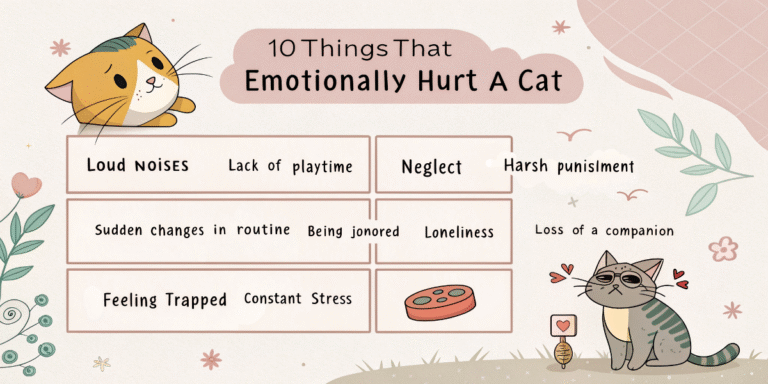Why Your Cat Is Peeing Outside the Litter Box: A Complete Guide to Understanding and Solving This Common Problem
When your beloved feline companion starts avoiding their litter box, it can be frustrating and concerning. However, it’s important to understand that cats aren’t being mischievous or spiteful when they eliminate outside their designated area. Instead, they’re trying to communicate that something is wrong. This comprehensive guide will help you identify the root causes and provide effective solutions to get your cat back to using their litter box consistently.
Understanding the Message: Why Cats Avoid Their Litter Box
Cats are naturally clean animals with strong instincts about where they eliminate. When they suddenly change this behavior, they’re sending you an important message about their physical health, emotional well-being, or environmental conditions. Let’s explore the three main categories of issues that cause this behavior.
1. Health Issues: The Hidden Culprits
Common Medical Conditions
Cats are masters at hiding discomfort—a survival trait inherited from their wild ancestors. However, several health conditions can make using the litter box painful or difficult:
Urinary Tract Infections (UTIs)
- Make urination painful, causing cats to associate the litter box with discomfort
- Often accompanied by frequent urination attempts and straining
Kidney Disease
- Increases urination frequency, making it harder for cats to reach the litter box in time
- More common in senior cats
Arthritis
- Particularly affects older cats, making it painful to climb into the litter box
- According to research published in the Journal of Feline Medicine and Surgery, approximately 63% of cats over 10 years old have arthritis
Warning Signs to Watch For
| Health Issue | Symptoms to Monitor |
|---|---|
| UTI/Kidney Disease | Straining to urinate, excessive licking of genital area, crying out in pain |
| Arthritis | Reduced mobility, difficulty jumping, stiffness, reluctance to climb |
What You Can Do
Early detection and veterinary care are crucial. If you notice any of these symptoms, consult your veterinarian immediately. Many of these conditions are manageable with proper treatment, and early intervention can significantly improve your cat’s quality of life.
2. Behavioral Issues: Stress and Environmental Changes
Major Stressors That Affect Litter Box Habits
Moving to a New Home Cats are territorial creatures who find comfort in familiar surroundings. A new environment with unfamiliar scents and sights can be overwhelming and stressful.
New Pet or Family Member The introduction of a new pet or family member (including babies) can disrupt your cat’s sense of security and routine. They may perceive changes as threats to their territory.
Changes in Litter or Litter Box What seems like a minor change to humans can be significant to cats. Their litter box is part of their territory, and sudden changes in litter type or box style can cause confusion.
Routine Disruptions Cats thrive on predictability. Changes in your work schedule, feeding times, or daily activities can create anxiety that manifests as inappropriate elimination.
Environmental Stressors Loud noises, construction, renovations, or even parties can overwhelm sensitive cats, leading them to seek comfort through unusual behaviors.
Solutions for Behavioral Issues
Gradual Transitions
- When introducing new litter, mix small amounts with the old litter over a week
- Provide separate spaces for new pets initially, allowing gradual introduction
- Maintain consistent feeding and attention schedules
Stress Reduction Techniques
- Create quiet, safe retreat spaces with favorite blankets and toys
- Use cat-friendly pheromone diffusers that release synthetic versions of calming pheromones
- Establish predictable routines as quickly as possible after changes
3. Litter Box Problems: Environment and Maintenance
Essential Litter Box Requirements
Cleanliness Standards Cats have a sense of smell 14 times stronger than humans. What seems clean to you might be overwhelming to your cat. A dirty litter box can be a major deterrent.
Size and Accessibility
- The box should be large enough for your cat to turn around comfortably
- Senior cats and kittens may need boxes with lower sides for easier access
- Consider your cat’s physical limitations when choosing box height
Location Considerations
- Place boxes in quiet, low-traffic areas
- Ensure privacy while maintaining easy access
- Avoid placing boxes near food and water dishes
The Multi-Cat Household Rule
Golden Rule: Have one more litter box than the number of cats in your household. This ensures each cat has options and reduces territorial disputes.
Litter Preferences
Some cats have strong preferences for certain types of litter. You may need to experiment with different textures and materials to find what your cat prefers.
Maintenance Schedule for Optimal Litter Box Hygiene
| Task | Frequency |
|---|---|
| Scooping waste | Daily |
| Complete litter change | Weekly |
| Box washing with mild soap | Weekly |
| Deep cleaning and odor elimination | Monthly |
Fascinating Feline Facts
Did you know that cats’ incredible sense of smell—14 times stronger than humans—means they can detect odors in a litter box that seem completely clean to us? This is why maintaining impeccable cleanliness is so crucial for litter box success.
Creating a Litter Box Success Plan
Step 1: Rule Out Medical Issues
Schedule a veterinary examination to ensure no underlying health problems are causing the behavior.
Step 2: Assess Environmental Factors
Evaluate recent changes in your home, routine, or family composition that might be causing stress.
Step 3: Optimize Litter Box Conditions
- Ensure proper cleanliness, size, and location
- Provide adequate number of boxes for multi-cat households
- Experiment with different litter types if needed
Step 4: Implement Stress-Reduction Strategies
- Use pheromone diffusers
- Create safe spaces
- Maintain consistent routines
- Allow gradual transitions for any changes
When to Seek Professional Help
If your cat continues to eliminate outside the litter box despite addressing these factors, consult with your veterinarian or a certified cat behaviorist. Sometimes, underlying medical conditions or complex behavioral issues require professional intervention.
Conclusion
Remember, when your cat avoids the litter box, they’re not being difficult—they’re trying to communicate that something needs attention. By understanding the potential causes and implementing appropriate solutions, you can help your feline friend feel comfortable and secure while maintaining a clean, harmonious home environment.
The key to success is patience, observation, and addressing the root cause rather than just the symptoms. With the right approach, most litter box issues can be resolved, restoring peace of mind for both you and your cat.





